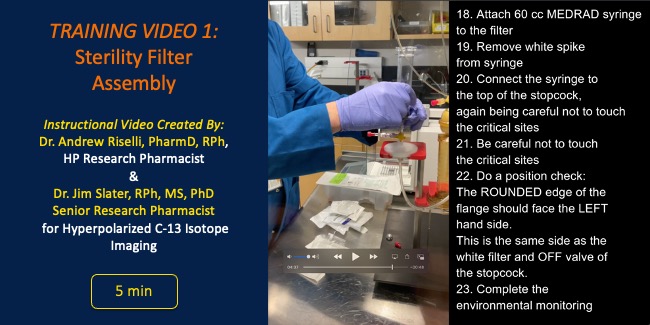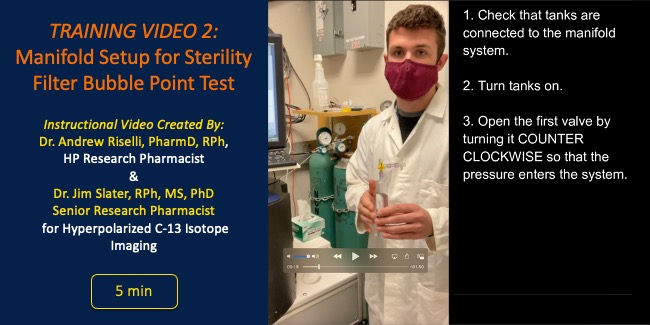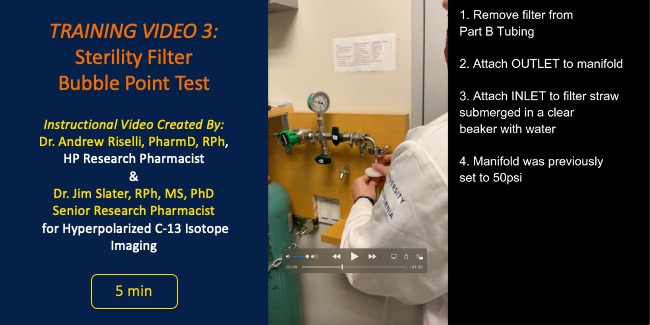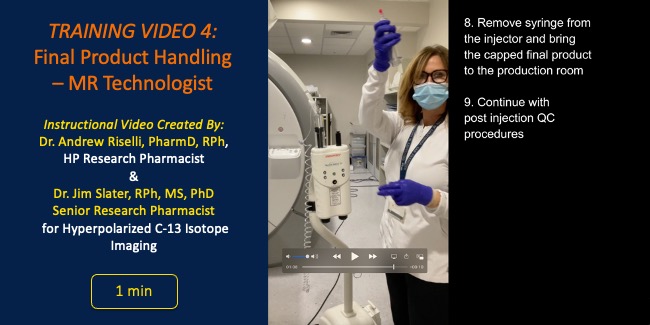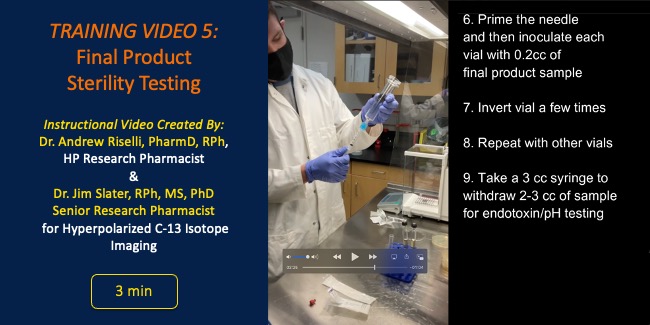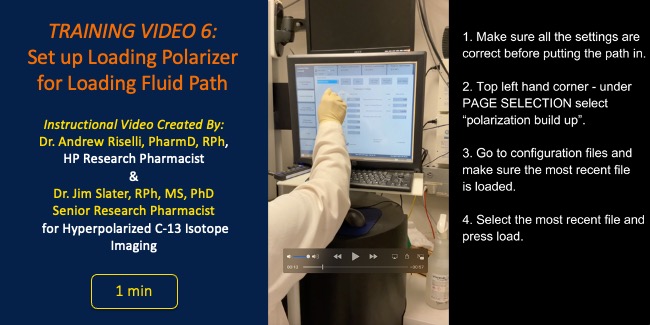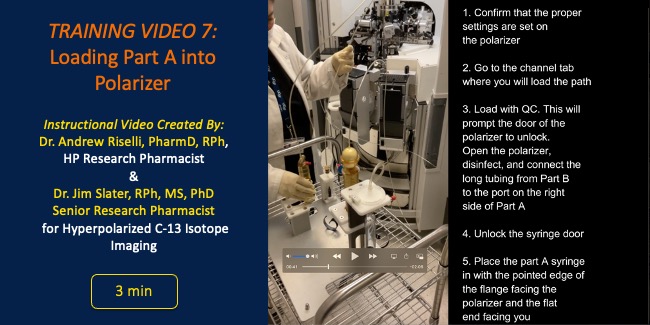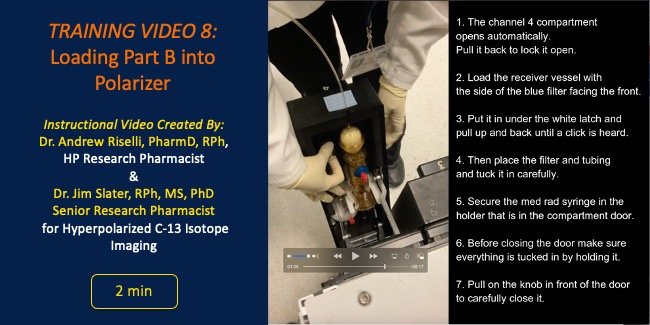Research Tools & Dissemination
![]()
Tools
Description
Preclinical
Human Research
Cell, Tissue, Animals
New Cell
& Tissue Culture
HP Probe Formulations and Preparation, Equipment Set-up
DNP/dissolution Methodology & Polarization Hardware
MR Scanner
Coil Development
MR Sequences, pulse sequence construction,
HP MRI Toolbox
& SIVIC Download
Model Resources
![]()
Realistic Preclinical Models and Correlative Science Methods
As part of our TR&D2 project we are proud to offer training in Realistic Preclinical Models and Correlative Science Methods. For more information please fill out our Training Sign-up Form.
Cell, Tissue and Animal Model Resources
Below you will find a list of our Cell, Tissue, and Animal Model Resources. Interested in trying one of our model systems? Email us at [email protected].
Infection Models
Model System
HP Application
HP Probe
Reference
E.Coli, S.Aureus
Bioreactor (alginate encapsulated) and cell slurry
[1-13C]pyruvate
[2-13C]pyruvate
Inflammation
Model System
HP Application
HP Probe
Reference
Macrophages
Cell slurry
[1-13C]pyruvate
[1-13C]dehydroascorbate
Non-invasive Detection of M1 Activation in Macrophages using Hyperpolarized 13C MRS of Pyruvate and DHA at 1.457 Tesla. ISMRM Virtual Annual Meeting, August 2020, 0630.
Liver Models
Model System
HP Application
HP Probe
Reference
CCl4 fibrosis
In vivo
[1-13C]pyruvate
13C-Urea
N/A
Zucker Diabetic Fatty (ZDF) diabetes
In vivo
[1-13C]pyruvate
N/A
Methionine Choline Deficient Diet
In vivo
[1-13C]pyruvate
[1-13C]dehydroascorbate
N/A
High fat diet
In vivo
[1-13C]pyruvate
N/A
Wag Rij/CC531 Colorectal cancer metastasis
In vivo
[1-13C]pyruvate
N/A
Multiple Sclerosis Models
Model System
HP Application
HP Probe
Reference
Cuprizone model
In vivo
Cuprizone-EAE model
In vivo
[1-13C]pyruvate
13C-Urea
Hyperpolarized 13C MRSI of pyruvate and urea can detect immunomodulatory responses to dimethyl fumarate therapy in a model of multiple sclerosis ISMRM Virtual Annual Meeting, August 2020, 3003.
Neuroinflammation
Model System
HP Application
HP Probe
Reference
LPS-induced mouse model of inflammation
In vivo
[1-13C]pyruvate
[2-13C]pyruvate
Prostate Cancer Models
Model System
HP Application
HP Probe
Reference
PC3, Du145, LnCaP
Bioreactor (alginate encapsulated) and cell slurry
[1-13C]pyruvate
[2-13C]pyruvate
[5-13C]Glutamine
[1-13C]dehydroascorbate
TRAMP (genetic mouse model), LDHA knockout
In vivo
[1-13C]pyruvate
13C-Urea
[1-13C]dehydroascorbate
PDX (LTL and LuCaP series)
Sub-renal, intratibial and intrahepatic
[1-13C]pyruvate
13C-Urea
N/A
Tissues from Prostatectomy
Bioreactor of tissue slice culture
Renal Cell Carcinoma Models
Model System
HP Application
HP Probe
Reference
UOK262, UMRC6, HK-2
Bioreactor (alginate encapsulated)
UOK262, A498, 786O
Orthotopic in vivo
PDX
Orthotopic in vivo
Tissue slice culture (bioreactors)
[1-13C]pyruvate
N/A
Tissues from Nephrectomy
Bioreactor of tissue slice culture
Traumatic Brain Injury
Model System
HP Application
HP Probe
Reference
Controlled cortical Impact model
In vivo
[1-13C]pyruvate
Bioreactor Resources
![]()
As part of our TR&D2 project we are proud to offer training in New Cell & Tissue Culture Bioreactors. For more information please fill out our Training Sign-up Form.
Production & Development Resources
![]()
Preclinical Production & Development Resources
HP Imaging & Production Facility-Virtual Overview:
- Click here to learn more about: Our Facility, Team & Support/Offerings
Probe Development for Preclinical Research
Equipment Descriptions:
- Oxford PulsarTM Benchtop NMR Spectrometer System
- Ocean Insight DH-2000-BAL Light Source
- Micro-Osmette Automatic High Sensitivity 50 uL Osmometer
Education & Training:
- (HP MRI Course 2023) - Preps and How to Combine Them. Basics, Tips and Tricks of HP Chemistry: As part of our TR&D2 project we are proud to offer training in HP probe preparation and approaches to formulating new compounds. Click the presentation to learn more about: the requirements of a good HP agent, the essential elements of a HP formulation, a general approach to formulating a new compound, the process of quality assurance for a batch of formulated compounds, and approaches to improving polarization.
Resource: Presentation
Format: Video (.mp4) (Updated 07/19/2023)
Applicable Research Areas:
Preclinical
Production for Preclinical Research
Equipment Descriptions:
HyperSense DNP Polarizer
SpinAligner Polarizer
Education & Training:
- Recipe/Protocol - Dissolution-DNP Formulation of carbon-13 labeled compounds: As part of our TR&D2 project we are proud to offer training in Formulation of Carbon-13 Labeled Compounds for the Hypsersense (3.35 T @ ~1.38K). This document covers the following topics: Glassing and High Compound Concentration; Stability of Compound Formulations; Trityl Radical Storage, Handling, Structures and Molecular Weight; Recipes for: Metabolism Probes, Perfusion Probes, Extracellular pH Probes, Metal Ion Probes, Redox Probes, Necrosis Probes
Resource: Recipe / Protocol
Format: PDF (Updated 4/13/2023)
Applicable Research Areas:
Preclinical
- (HP MRI Course 2023) - Introduction and DNP Physics: As part of our TR&D2 project we are proud to offer this presentation on DNP Physics. Watch this presentation to learn more about: nuclear apin and NMR active nuclei, relative sensitivity of NMR active nuclei of biologic interest, methods of hyperpolarization, the basic principles of dynamic nuclear polarization (DNP), the factors that affects nuclear hyperpolarization: field strength, temperature, microwave, and sample formulation, result and timescale of a DNP-enhanced MR experiment
Resource: Presentation
Format:
Video (.mp4) (Updated 06/21/2023)
Applicable Research Areas:
Preclinical
- (HP MRI Course 2023) - DNP Hardware: HyperSense, SpinAligner, and SPINlab: As part of our TR&D2 project we are proud to offer this presentation on the preclinical and clinical polarizers. Watch this presentation to learn more about: the requirements for DNP Hardware, the different types of commerical dissolution DNP systems, and the technological advances in dissolution DNP
Resource: Presentation
Format:
Video (.mp4) (Updated 06/28/2023)
Applicable Research Areas:
Preclinical & Human Research
- (HP MRI Course 2023) - Experimental Stategies: As part of our TR&D2 project we are proud to offer this presentation on Experimental Stategies: Cells and Animals. Watch this presentation to learn more about: the essential workflow of HP experiments (dissolution, transfer to magnet, delivery), applications, metabolism, probe testing and utilization, choices of probes, and probes and their specific application
Resource: Presentation
Format:
Video (.mp4) (Updated 07/13/2023)
Applicable Research Areas:
Preclinical
- Presentation on "Preparation and Clinical Translation of C-13 MRI Agents": This poster presentation given by Dr. Andrew Riselli, PharmD, RPh, HP Research Pharmacist gives an overview of the Preparation Procedures and Clinical Translation Process of three agents at UCSF currently underway: [13C]pyruvate/urea Combination: IND Submitted, [13C]bicarbonate: Nonclinical Studies, [1-13C]α-ketoglutarate (α-KG): Formulation Development.
Resource: Poster Presentation
Format: Poster (.pdf) and Audio File (.mp4) (Updated 12/12/2021)
Applicable Research Areas:
Preclinical & Hunab Research
- Recipe/Protocol - 8M Urea Phantom: This phantom recipe is courtesy of Ralph Hurd (GE Healthcare) and uses single-labeled C-13 Urea (with natural abundance N-14).
Resource: Recipe
Format: PDF (Updated 07/01/2022)
Applicable Research Areas:
Preclinical
- Recipe/Protocol - Reusable/Research Fluid Path (RFP) Assembly Protocol – A quick reference guide: This is a quick reference guide for investigational and preclinical use only and should not be used for human studies.
Resource: Reference Guide
Format: PDF (Updated 02/01/2021)
Applicable Research Areas:
Preclinical
- Recipe/Protocol - Probe Preparation Demo: Preparation + QC of Compounds for Hyperpolarization: As part of our TR&D2 project we are proud to offer a demo in Preparation + QC of Compounds for Hyperpolarization. Click the link to the right to learn more about: Sample set up, Basics of HP Formulation, Quality Assurance of Formulated Agents, Advanced HP Formulation Strategies, Sample Agent Formulation Flow Chart.
Resource: Written Demonstration
Format: PDF (Updated 03/23/2017)
Applicable Research Areas:
Preclinical
- Training - HP Probe Preparation Training in Novel Hyperpolarized MR molecular Imaging Probes: As part of our TR&D2 project we are proud to offer HP Probe Preparation Training in novel hyperpolarized MR molecular imaging probes. For more information please email [email protected].
Resource: Hands-on Support
Contact: [email protected]
Human Research Production & Development Resources
HP Imaging & Production Facility-Virtual Overview:
- Click here to learn more about: Our Facility, Team & Support/Offerings
Probe Development for Human Research
Equipment Descriptions:
Ocean Insight DH-2000-BAL Light Source
Production for Human Research
Equipment Descriptions:
- Labconco Purifier 4ft & 6ft Horizontal Clean Benches
- 5T GE SPINlab Multisample Polarizer, QC Unit Prototype & Multiprobe QC
Presentation & Tutorials:
- Preparation and Clinical Translation of 13C MRI Agents (.pdf) and Audio File (.mp4)
Description: This poster presentation given by Dr. Andrew Riselli, PharmD, RPh, HP Research Pharmacist gives an overview of the Preparation Procedures and Clinical Translation Process of three agents at UCSF currently underway: [13C]pyruvate/urea Combination: IND Submitted, [13C]bicarbonate: Nonclinical Studies, [1-13C]α-ketoglutarate (α-KG): Formulation Development.
- Production Process of Hyperpolarized Compounds and Terminal Sterilization by Filtration Impact on Patient Safety (.pdf)
Description: The purpose of this presentation is to evaluate the impact of using terminal sterilization without radiation in the production of sterile products. The approach discussed focuses on the manufacturing process in regards to bacterial contamination and the validation of the effectiveness of a sterility filter in removing bacteria.
- Production Tutorials Videos: Shown below are step-by-step instructional videos on the Production process. Questions regarding these videos? Email this team: [email protected], [email protected], [email protected]
Education & Training:
- (HP MRI Course 2023) - DNP Hardware: HyperSense, SpinAligner, and SPINlab: As part of our TR&D2 project we are proud to offer this presentation on the preclinical and clinical polarizers. Watch this presentation to learn more about: the requirements for DNP Hardware, the different types of commerical dissolution DNP systems, and the technological advances in dissolution DNP
Resource: Presentation
Format:
Video (.mp4) (Updated 06/28/2023)
Applicable Research Areas:
Preclinical & Human Research
- Clinical translation of hyperpolarized 13C pyruvate and urea (Co-Pol) imaging agents: This presentation given by Dr. Andrew Riselli, PharmD, RPh, HP Research Pharmacist goes over:
- Developing a formulation and procedure to prepare a sterile HP 13C pyruvate and urea injection product.
- Conducting nonclinical studies including toxicology.
- Submitting the clinical protocol, Chemistry Manufacturing and Controls (CMC), and toxicology reports to the FDA for approval.
- General guidelines for submitting the clinical protocol to the IRB for approval.
Resource: Work Flow Presentation
Format: PDF (Updated 08/03/21)
Applicable Research Areas:
Human Research
- Production of Filled Pharmacy Kits (cassettes) and Terminal Sterilization For Human Studies: As part of our TR&D1 project we are proud to offer training in Production of Filled Pharmacy Kits (cassettes) and Terminal Sterilization For Human Studies. Click on the button to the right to learn more about: Manufacturing Methods & Facilities, Acceptance Testing, Quality Control, Manufacturing and Release, Documentation and Analysis
Resource: Work Flow Presentation
Format: PDF (Updated 11/10/20)
Applicable Research Areas:
Human Research
- Sample Methods for GE SPINlab Polarizer: Methods for Pharmakit Filling & Polarizer Set-up
Resource: Methods
Coming soon
- HP Probe Preparation Training in Novel Hyperpolarized MR Molecular Imaging Probes: As part of our TR&D2 project we are proud to offer HP Probe Preparation Training in novel hyperpolarized MR molecular imaging probes.
Resource: Hands-on Support
Contact: [email protected]
Production Facility Support for Human Research:
Presentation: Production Facility for the Preparation of C-13 Hyperpolarized MR Imaging Agents for Human Studies (.pdf)
Description: The purpose of this presentation is to outline the steps in designing a hyperpolarized stable isotope production facility that meets FDA compliance by following these requirements.
Polarization Resources
![]()
Preclinical Polarization Resources
Equipment Descriptions:
- Commercial Oxford Instruments HyperSense
- HyperSense DNP Polarizer
- SpinAligner Polarizer
- 3.35T GE SPINlab Polarizer
- 5T GE SPINlab Multisample Polarizer, QC Unit Prototype & Multiprobe QC
Education & Training:
- Overview Hyperpolarized 13C MRI: Polarization Physics & Hardware:
As part of our TR&D1 project we are proud to offer this seminar lecture on the overview of Polarization Physics & Hardware for Hyperpolarized 13C MRI. Please see the outline below for topics covered. To view the presentation please see the links to the right.
DNP Physics: Magnetization, Boltzmann Distribution, Signal-to-Noise Ratio, Sensitivity, Thermal Polarization, Brute-Force Polarization, Dynamic Nuclear Polarization, DNP Hyperpolarization, DNP Requirements, Solid Effect, Cross Effect, Thermal Mixing, Spin Diffusion, Effect of Temperature and Field Strength, Effect of Radical
Polarizer Hardware: HyperSense Polarizer (Buildup, Dissolution Procedure, Key Considerations) ; SPINlab Polarizer (Comparison with HyperSense, Fluid Path, Key Considerations, Clinical Applications)
Suggestions on Further Readings
Resource: Slides
Format: PDF or Slides with Audio (Updated: 07/12/19)
Applicable Research Areas:
Preclinical & Human Research
- Preclinical DNP Polarizer training for improved DNP Methodology: As part of our TR&D1 project we are proud to offer Preclinical DNP Polarizer training for improved DNP Methodology. This training is hands-on which allows users to learn through experience with support from members of our Center. For more information please email [email protected].
Resource: Hands-on Support
Contact: [email protected]
Human Research Polarization Resources
Equipment Descriptions:
5T GE SPINlab Multisample Polarizer, QC Unit Prototype & Multiprobe QC
Education & Training:
- Overview Hyperpolarized 13C MRI: Polarization Physics & Hardware:
As part of our TR&D1 project we are proud to offer this seminar lecture on the overview of Polarization Physics & Hardware for Hyperpolarized 13C MRI. Please see the outline below for topics covered. To view the presentation please see the links to the right.
DNP Physics: Magnetization, Boltzmann Distribution, Signal-to-Noise Ratio, Sensitivity, Thermal Polarization, Brute-Force Polarization, Dynamic Nuclear Polarization, DNP Hyperpolarization, DNP Requirements, Solid Effect, Cross Effect, Thermal Mixing, Spin Diffusion, Effect of Temperature and Field Strength, Effect of Radical
Polarizer Hardware: HyperSense Polarizer (Buildup, Dissolution Procedure, Key Considerations) ; SPINlab Polarizer (Comparison with HyperSense, Fluid Path, Key Considerations, Clinical Applications)
Suggestions on Further Readings
Resource: Slides
Format: PDF or Slides with Audio (Updated: 07/12/19)
Applicable Research Areas:
Preclinical & Human Research
- National Cancer Institute - IND Regulatory & Manufacturing Resources on Hyperpolarized [13C] Pyruvate: This resource provides links to the component documents for an IND for hyperpolarized [13C] Pyruvate. For more information please email [email protected].
Resource: Dissemination
View: IND Regulatory Documents for HP C-13 Pyruvate
Contact: [email protected]
- Human DNP Polarizer training for improved DNP Methodology: As part of our TR&D1 project we are proud to offer Human DNP Polarizer training for improved DNP Methodology. This training is hands-on which allows users to learn through experience with support from members of our Center. For more information please email [email protected].
Resource: Hands-on Support
Contact: [email protected]
Acquisition Hardware Resources
![]()
Preclinical Acquisition Hardware Resources
MR Scanner Coil Development for Preclinical Research
Below you will find a list of our 13C coils for our 3T, 11.7T and 4T systems. Interested in trying our preclinical coil designs? Email us at [email protected].
3T
11.7T
14T
Bruker 1H linear/13C linear mouse body (40 mm)
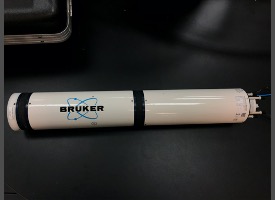
Varian, DD, AutoX DB PFG (5 mm)
nuclei: 13C, 31P, 15N
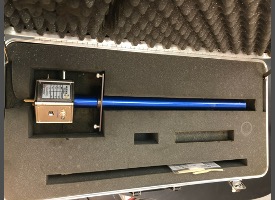
Varian, M2M Imaging, 1H linear/13C linear (40 mm)
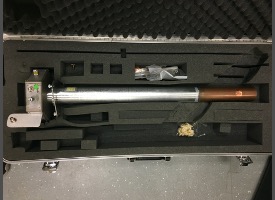
Doty 1H linear/13C linear mouse head (20 mm)
Varian, DD, BB (10 mm)
nuclei: 13C, 31P, 15N
Varian, 13C quad (40 mm)
Neos Biotec 1H quad/13C quad (45 mm)
Varian, ID, PFG, BB (5 mm)
nuclei: 13C, 31P, 15N
Varian, BB, DD, 15N-31P(H), AutoX (10 mm)
UCSF 13C quad rat body (76 mm)
Varian, DD, SW/PFG, DB (5 mm)
nuclei: 13C, 31P, 15N; resonance frequency changed from 600 MHz to 500 MHz
Pulseteq 13C quad/1H quad (42 mm)
Varian, gHX Nano, DD
nuclei: 13C, 31P, 15N, 29Si
Neos Biotec 1H linear/13C linear mouse brain surface
Varian, DD, BB (10mm)
Human Research Acquisition Hardware Resources
MR Scanner Coil Development for Human Research
Education & Training:
- Coil Design: Coil images & descriptions used for Human Research Acquisition - Coming soon. Interested in trying our coil designs for human research? Email us at [email protected].
Resource: Design Methods
Contact: [email protected]
Acquisition Software Resources
![]()
Preclinical Acquisition Software Resources
Check out our UCSF-HMTRC GitHub Page to see a full list of what is publicly available.
Some resources are also available by request as listed below.
Hyperpolarized MRI Toolbox
Description: The goal of this toolbox is to provide research-level and prototyping software tools for hyperpolarized MRI experiments. It is currently based on Matlab code, and includes code for designing radiofrequency (RF) pulses, readout gradients, and data reconstruction. This toolbox also contains pulse sequence construction tools such as the Spectral-Spatial RF Pulse Design for MRI and MRSI Matlab Package. This package includes Matlab functions to design spectral-spatial RF pulses (also known as spatial-spectral RF pulses) for application to magnetic resonance spectroscopy and imaging.
HP MRI Tool box Download: Matlab Central FileExchange
Source code repository: GitHub (You can also become a contributor to project and add any code of your own or fix/improve the current software.)
Applicable Research Areas:
Preclinical & Human Research
SIVIC Open-source Program
Description: SIVIC is an open-source, standards-based software framework and application suite for processing and visualization of DICOM MR Spectroscopy data. Through the use of DICOM, SIVIC aims to facilitate the application of MRS in medical imaging studies. This program features a PyDICOM Tool Box.
Supporting Resources:
HP C-13 SIVIC Software: get on Sourceforge
Applicable Research Areas:
Preclinical & Human Research
MR Sequences for Preclinical Research
External RF MRI: This Matlab code helps the user control a Agilent RF vector electronic signal generator (ESG) from a PC, for the purpose of generating RF excitation pulses for magnetic resonance imaging (MRI). This is especially useful for equipping a standard "single nucleus" MRI scanner with a supplementary RF transmission channel for enabling heteronuclear MRI experiments. Questions? Email us at [email protected].
Resource: Sequence Dissemination
Link: External RF MRI on GitHub
Applicable Research Areas:
Preclinical & Human Research
Multiband RF Pulse Design: This is a Matlab toolbox for RF pulse design used in Magnetic Resonance Imaging (MRI). It features design of 1D selective RF pulse with multiband magnitude profile, arbitrary phase profile and generalized flip angle. The implementation is built on Shinnar-Le Roux (SLR) algorithm and convex optimization. Spectral sparsity was exploited to further improve pulse performance, such as minimizing pulse duration, transition width or total energy with flexible trade-off. Questions? Email us at [email protected].
Resource: Sequence Dissemination
Link: Multiband RF Pulse Design on GitHub
Applicable Research Areas:
Preclinical & Human Research
Bruker 3T Packages (PV6):
Bruker 3T 2D CSI: Contains SIVIC 2D CSI sequences and the associated scripts for SIVIC processing and slab 1D sequence that are used at UCSF.
Bruker 3T EPSI - Pulse Sequence Program: This SPSP pulse acquisition package for Bruker 3T includes instructions and resources on how to calculate and calibrate the pulse & gradient profile for the hyperpolarize probe of interest as well as how to acquire data. Also, through this resource you can find the custom Matlab codes for the analysis of 2D EPSI data in preclinical brain tumor models which was acquired on a Bruker horizontal MR system.
Bruker 3T Slab Spectroscopy - Pulse Sequence Program: This SPSP pulse acquisition package for Bruker 3T includes instructions and resources on how to calculate and calibrate the pulse & gradient profile for the hyperpolarize probe of interest as well as how to acquire data.
Available by Request:
Contact [email protected]
Resource: Sequence Dissemination
Applicable Research Areas:
Preclinical Research
Bruker ParaVision 6 hpMR Method Fiiles: Created from The University of Texas MD Anderson Cancer Center, Department of Imaging Physics by Keith Michael, this repository contains Bruker ParaVision 6 hpMR method files and associated Matlab tools for the design and implementation of hyperpolarized imaging experiments using snapshot EPI readouts, IDEAL encoding and/or spectral-spatial RF excitations. Please note, this method has currently been tested only on the CentOS 5.11 operating system.
Resource: Sequence Dissemination
Link: PV6 HP MR on GitHub
Applicable Research Areas:
Preclinical Research
Education - Overview of Pulse Sequences & Acquisition Strategies
- (HP MRI Course 2021) - Hyperpolarized C-13 MRI Pulse Sequence Strategies: This presentation is an overview of Data Processing provided from the 2021 HP MRI Course and includes topics such as:
- Imaging Trade-offs: T1 Decay, 1H vs 13C Imaging
- Coils & Calibration: RF Coils, Multichannel Arrays, 13C Frequency Calibration, RF Power Calibration, Autonomous Scanning, Flip Angle, Dynamic Imaging
- Imaging Approaches: k-space, HP Imaging of Inert Substrates, SSFP, Metabolically Active Substrates, Dealing with Off-Resonance, Spectroscopic Imaging Techniques, Chemical Shift Imaging, Rapid Spectroscopic Techniques, Model-Based Reconstructions, Signal Model in k-space, Model-Based Reconstructions, Signal Model in k-space, Spectral Selectivity, Slice-Selective Excitation, Spectral-Spatial RF Pulses/Excitation, Metabolite-Specific Imaging, Acquisition Scheme Comparison, Sequence Trade-offs
Resource: Course Presentation
Format: Video (.mp4) (Updated: 07/12/21)
Applicable Research Areas:
Preclinical & Human Research
Human Research Acquisition Software Resources
Check out our UCSF-HMTRC GitHub Page to see a full list of what is publicly available.
Some resources are also available by request as listed below.
Hyperpolarized MRI Toolbox
Description: The goal of this toolbox is to provide research-level and prototyping software tools for hyperpolarized MRI experiments. It is currently based on Matlab code, and includes code for designing radiofrequency (RF) pulses, readout gradients, and data reconstruction. This toolbox also contains pulse sequence construction tools such as the Spectral-Spatial RF Pulse Design for MRI and MRSI Matlab Package. This package includes Matlab functions to design spectral-spatial RF pulses (also known as spatial-spectral RF pulses) for application to magnetic resonance spectroscopy and imaging.
HP MRI Tool box Download: Matlab Central FileExchange
Source code repository: GitHub (You can also become a contributor to project and add any code of your own or fix/improve the current software.)
Applicable Research Areas:
Preclinical & Human Research
SIVIC Open-source Program
Description: SIVIC is an open-source, standards-based software framework and application suite for processing and visualization of DICOM MR Spectroscopy data. Through the use of DICOM, SIVIC aims to facilitate the application of MRS in medical imaging studies. This program features a PyDICOM Tool Box.
Supporting Resources:
HP C-13 SIVIC Software: get on Sourceforge
Applicable Research Areas:
Preclinical & Human Research
MR Sequences for Human Research
External RF MRI: This Matlab code helps the user control a Agilent RF vector electronic signal generator (ESG) from a PC, for the purpose of generating RF excitation pulses for magnetic resonance imaging (MRI). This is especially useful for equipping a standard "single nucleus" MRI scanner with a supplementary RF transmission channel for enabling heteronuclear MRI experiments. Questions? Email us at [email protected].
Resource: Sequence Dissemination
Link: External RF MRI on GitHub
Applicable Research Areas:
Preclinical & Human Research
Multiband RF Pulse Design: This is a Matlab toolbox for RF pulse design used in Magnetic Resonance Imaging (MRI). It features design of 1D selective RF pulse with multiband magnitude profile, arbitrary phase profile and generalized flip angle. The implementation is built on Shinnar-Le Roux (SLR) algorithm and convex optimization. Spectral sparsity was exploited to further improve pulse performance, such as minimizing pulse duration, transition width or total energy with flexible trade-off. Questions? Email us at [email protected].
Resource: Sequence Dissemination
Link: Multiband RF Pulse Design on GitHub
Applicable Research Areas:
Preclinical & Human Research
EPI pulse sequence: In order to enable faster, more robust hyperpolarized (HP) MRI for patient studies, we developed a new metabolite-specific broadband EPI pulse sequence for rapid volumetric imaging of HP [1-13C]pyruvate and other molecules. This pulse sequence contains commonly used features such as ramp-sampling, partial-Fourier, and Nyquist ghost correction. It includes built-in spectral-spatial RF pulses and flip angle schemes for pyruvate and other probes, as well as the capability to integrate user-designed pulses and flip angles. This pulse sequence is compatible with clinical MR scanners and includes reconstruction and analysis software, facilitating the integration of metabolic data into the clinical workflow.
Resource: Sequence Dissemination
Contact: [email protected]
MNS Research Pack (GE Healthcare): The MNS Research Pack is a software acquisition package for GE MRI scanners focused on multi-nuclear imaging and spectroscopy for hyperpolarized [1-13C]pyruvate research. It includes different sequences and semi-automatic pre-scanning. In addition to pre-installed methods, additional RF pulses and trajectories can be designed off-line in Matlab, saved in a file, and read into the sequence. The package is available on request, contact: Rolf.Schulte_at_Research.ge.com
Available by Request:
Contact [email protected]
Resource: Sequence Dissemination
RT Hawk: RThawk is an interactive platform for hyperpolarized [1-13C]pyruvate multislice spiral imaging, providing wide coverage and featuring automatic frequency and power calibrations. Originally developed for cardiac MRI applications, it offers specialized cardiac-gated C13 acquisition techniques integrated into standard proton heart studies, which are tailored for short-axis, long-axis views and more. It also comes with pulse programming environment that allows technical development and adaptation for other imaging targets.
Available by Request:
Contact [email protected]
Resource: Sequence Dissemination
Education - Overview of Pulse Sequences & Acquisition Strategies
- (HP MRI Course 2023) - Hyperpolarized MR Experimental Methods - Human: This presentation is an overview of Data Processing provided from the 2023 HP MRI Course. Objectives of this presentation are:
- Identify the necessary components involved in a human HP C-13 MR study.
- Give an overview of major areas of interest for clinical studies at UCSF.
- Examine the MR hardware, pulse sequences and processing techniques.
- Highlight the importance of patient safety and sterility for C-13 stable-isotope clinical studies/trials.
Resource: Course Presentation
Format: Video (.mp4) (Updated: 08/02/23)
Applicable Research Areas:
Human Research
- (HP MRI Course 2021) - Hyperpolarized C-13 MRI Pulse Sequence Strategies: This presentation is an overview of Data Processing provided from the 2021 HP MRI Course and includes topics such as:
- Imaging Trade-offs: T1 Decay, 1H vs 13C Imaging
- Coils & Calibration: RF Coils, Multichannel Arrays, 13C Frequency Calibration, RF Power Calibration, Autonomous Scanning, Flip Angle, Dynamic Imaging
- Imaging Approaches: k-space, HP Imaging of Inert Substrates, SSFP, Metabolically Active Substrates, Dealing with Off-Resonance, Spectroscopic Imaging Techniques, Chemical Shift Imaging, Rapid Spectroscopic Techniques, Model-Based Reconstructions, Signal Model in k-space, Model-Based Reconstructions, Signal Model in k-space, Spectral Selectivity, Slice-Selective Excitation, Spectral-Spatial RF Pulses/Excitation, Metabolite-Specific Imaging, Acquisition Scheme Comparison, Sequence Trade-offs
Resource: Course Presentation
Format: Video (.mp4) (Updated: 07/12/21)
Applicable Research Areas:
Preclinical & Human Research
Data Analysis & File Sharing Resources
![]()
Preclinical Data Analysis Resources
Hyperpolarized MRI Toolbox
Description: The goal of this toolbox is to provide research-level and prototyping software tools for hyperpolarized MRI experiments. It is currently based on Matlab code, and includes code for designing radiofrequency (RF) pulses, readout gradients, and data reconstruction. This toolbox also contains pulse sequence construction tools such as the Spectral-Spatial RF Pulse Design for MRI and MRSI Matlab Package. This package includes Matlab functions to design spectral-spatial RF pulses (also known as spatial-spectral RF pulses) for application to magnetic resonance spectroscopy and imaging.
HP MRI Tool box Download: Matlab Central FileExchange
Source code repository: GitHub (You can also become a contributor to project and add any code of your own or fix/improve the current software.)
Applicable Research Areas:
Preclinical & Human Research
SIVIC Open-source Program
Description: SIVIC is an open-source, standards-based software framework and application suite for processing and visualization of DICOM MR Spectroscopy data. Through the use of DICOM, SIVIC aims to facilitate the application of MRS in medical imaging studies. This program features a PyDICOM Tool Box.
Supporting Resources:
HP C-13 SIVIC Software: get on Sourceforge
Applicable Research Areas:
Preclinical & Human Research
Videos on Data Visualization and Analysis
- (HP MRI Course 2023) Storage, Visualization, and Analysis of Hyperpolarized C-13 MR Data by Dr. Peder Larson: This presentation is from the 2023 HP MRI Course and includes topics such as:
- Data storage and preparation – ensure data is ready for analysis (File formats, Preprocessing e.g. phasing)
- Data visualization – inspect data (High dimensional data, Tools)
- Model-free metrics – alternatives to kinetic models (Ratios)
- Kinetic/pharmacokinetic modeling – fit data to a model for quantification
- Data Analysis, Live Demo
Resource: Course Presentation
Format: Presentation (Updated: 08/30/23)
Applicable Research Areas:
Preclinical & Human Research
- Di-chromatic Interpolation of Metabolic Magnetic Resonance Images by Dr. Nicholas Dwork, Postdoctoral Scholar: This presentation is an overview of a publication by Dr. Nicholas Dwork:
Dwork N, Gordon JW, Tang S, O'Connor D, Hansen ESS, Laustsen C, Larson PEZ. Di-chromatic interpolation of magnetic resonance metabolic images. MAGMA. 2021; 34(1):57-72. PMCID: PMC7983744
Resource: Data Processing Tutorial
Format: Video (.mp4)
(Updated: 05/10/21)
Applicable Research Areas:
Preclinical & Human Research
Data Samples & File Sharing
Preclinical Raw & Processed Data Examples, Disease Model Images: Examples of in vivo animal hyperpolarized MRI data can be found using the links to the right. These data sets were acquired with different methods and are described more in detail below.
- SIVIC Tutorials using Sample in vivo Hyperpolarized datasets: On our SOURCEFORGE page, you can find links to SIVIC tutorials that have been presented at live workshops. The data sets are from specific vendors, but the general concepts should applicable to data from any vendor.
- Sample in vivo Hyperpolarized MRI Data on GitHub: In the hyperpolarized-mri-toolbox on GitHub, you can access several in vivo hyperpolarized MRI data sets that come from animal and human studies that are acquired with a variety of different methods. Below are some selected examples:
Rat Kidneys Dynamic MRS Example: This dataset contains slab-selective dynamic MR spectroscopy, acquired in normal rat kidneys.
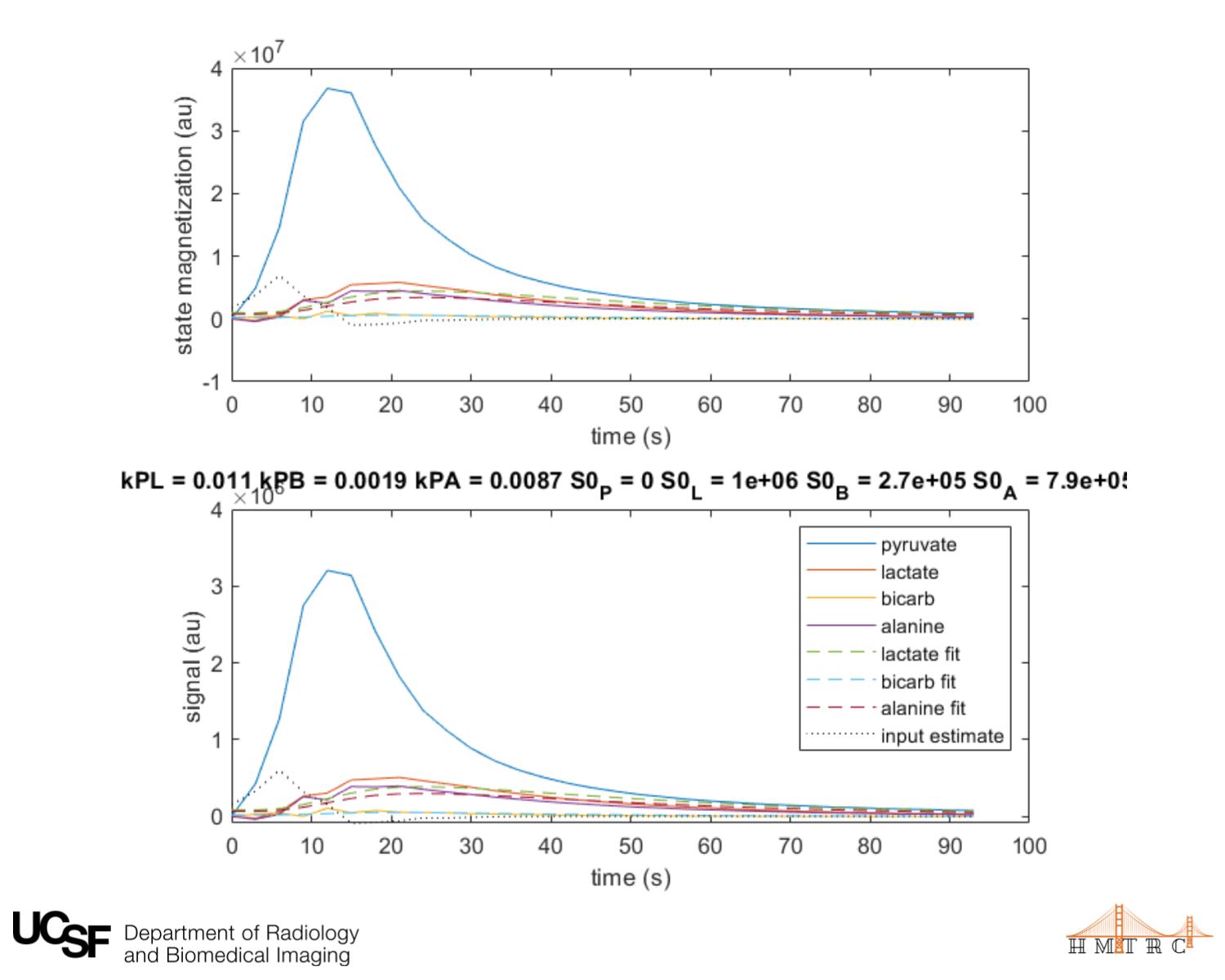
Rat Kidneys EPI: This dataset contains pyruvate and lactate dynamic imaging using metabolite-specific imaging with EPI in normal rat kidneys.
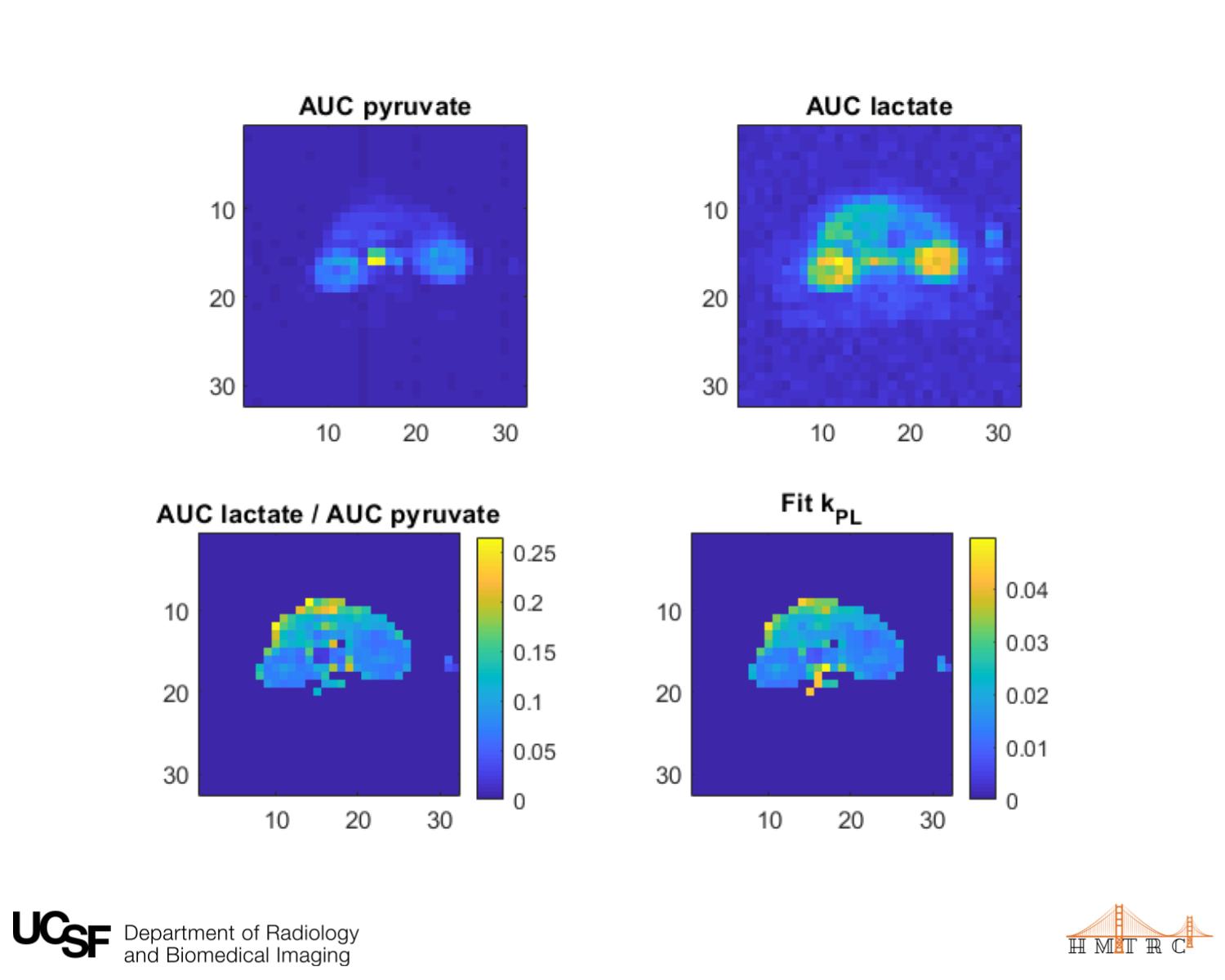
TRAMP Mouse Multi-slice EPI: This dataset contains pyruvate and lactate dynamic imaging using metabolite-specific imaging with EPI in a transgenic adenocarcinoma of mouse prostate (TRAMP) mouse model of prostate cancer.
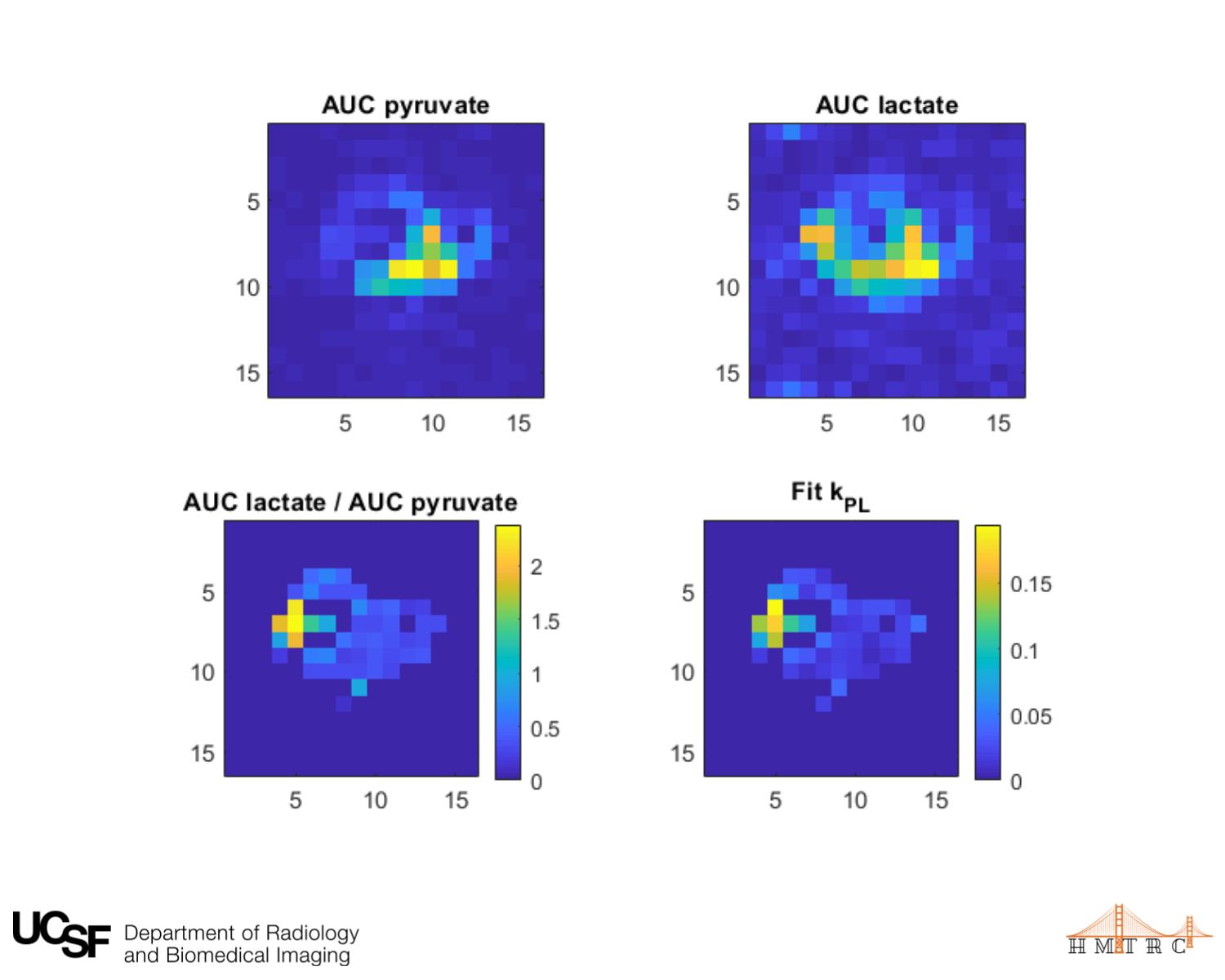
Resource: Data Samples & File Sharing
Link:
SIVIC Tutorial with Sample Data
Sample in Vivo HP Data on GitHub
Applicable Research Areas:
Preclinical & Human Research
Human Data Analysis Resources
Hyperpolarized MRI Toolbox
Description: The goal of this toolbox is to provide research-level and prototyping software tools for hyperpolarized MRI experiments. It is currently based on Matlab code, and includes code for designing radiofrequency (RF) pulses, readout gradients, and data reconstruction. This toolbox also contains pulse sequence construction tools such as the Spectral-Spatial RF Pulse Design for MRI and MRSI Matlab Package. This package includes Matlab functions to design spectral-spatial RF pulses (also known as spatial-spectral RF pulses) for application to magnetic resonance spectroscopy and imaging.
HP MRI Tool box Download: Matlab Central FileExchange
Source code repository: GitHub (You can also become a contributor to project and add any code of your own or fix/improve the current software.)
Applicable Research Areas:
Preclinical & Human Research
SIVIC Open-source Program
Description: SIVIC is an open-source, standards-based software framework and application suite for processing and visualization of DICOM MR Spectroscopy data. Through the use of DICOM, SIVIC aims to facilitate the application of MRS in medical imaging studies. This program features a PyDICOM Tool Box.
Supporting Resources:
HP C-13 SIVIC Software: get on Sourceforge
Applicable Research Areas:
Preclinical & Human Research
Videos on Data Visualization and Analysis
- (HP MRI Course 2023) - Storage, Visualization, and Analysis of Hyperpolarized C-13 MR Data by Dr. Peder Larson: This presentation is from the 2023 HP MRI Course and includes topics such as:
- Data storage and preparation – ensure data is ready for analysis (File formats, Preprocessing e.g. phasing)
- Data visualization – inspect data (High dimensional data, Tools)
- Model-free metrics – alternatives to kinetic models (Ratios)
- Kinetic/pharmacokinetic modeling – fit data to a model for quantification
- Data Analysis, Live Demo
Resource: Course Presentation
Format: Presentation (Updated: 08/30/23)
Applicable Research Areas:
Preclinical & Human Research
- Using EPI to investigate HP [1-13C]pyruvate metabolism in glioma patients and healthy volunteers by Dr. Adam Autry: This presentation is from the 2019 HP MRI Course and includes topics such as: Dynamic Echo Planar Imaging (EPI), Dynamic frequency-selective 13C EPI, EPI Processing Framework, Optimal Weights Coil Combination, Voxel-wise Phasing, Regions of Interest, Kinetic traces and fitting: NAWMl, kpl & kpb Maps with ROIs, Serial HP Data.
- Image Analysis Techniques 13C MRI in Clinical Study by Dr. Hsin-Yu Chen: This presentation is from the 2019 HP MRI Course and includes topics such as: Challenges in Clinical Mangement of Prostate Cancer, processing HP-13C Prostate Data, Peak Quantification, Phased Detection of Spectra, Phase Correction, Other Quantification Techniques, Receiver Correction, Receiver Correction - Case Study, Transmitter Considerations, Image Display, Masking and ROIs, Quantification of Cancer Metabolism.
- Di-chromatic Interpolation of Metabolic Magnetic Resonance Images by Dr. Nicholas Dwork, Postdoctoral Scholar: This presentation is an overview of a publication by Dr. Nicholas Dwork:
Dwork N, Gordon JW, Tang S, O'Connor D, Hansen ESS, Laustsen C, Larson PEZ. Di-chromatic interpolation of magnetic resonance metabolic images. MAGMA. 2021; 34(1):57-72. PMCID: PMC7983744
Resource: Data Processing Tutorial
Format: Video (.mp4)
(Updated: 05/10/21)
Applicable Research Areas:
Preclinical & Human Research
- Denoising of HP C-13 MR Images of the Human Brain using Patch-based Higher-order Singular Value Decomposition: This presentation is an overview of a publication by Dr. Yaewon Kim: Kim Y, Chen HY, Autry AW, Villanueva-Meyer J, Chang SM, Li Y, Larson PEZ, Brender JR, Krishna MC, Xu D, Vigneron DB, Gordon JW. Denoising of hyperpolarized 13C MR images of the human brain using patch-based higher-order singular value decomposition. Magn Reson Med. 2021 Jun 25. doi: 10.1002/mrm.28887. Epub ahead of print. PMID: 34173268.
Resource: Data Processing Tutorial
Format: Video (.mp4)
(Updated: 07/09/21)
Applicable Research Areas:
Human Research
- Specialized Computational Methods for Denoising, B1 Correction & Kinetic Modeling in HP 13C MR EPSI Studies of Liver Tumors: This presentation is an overview of a publication by Graduate Student Philip Lee from the Vigneron Group: Lee PM, Chen HY, Gordon JW, Zhu Z, Larson PEZ, Dwork N, Van Criekinge M, Carvajal L, Ohliger MA, Wang ZJ, Xu D, Kurhanewicz J, Bok RA, Aggarwal R, Munster PN, Vigneron DB. Specialized computational methods for denoising, B1 correction, and kinetic modeling in hyperpolarized 13C MR EPSI studies of liver tumors. Magn Reson Med. 2021 Jul 3. doi: 10.1002/mrm.28901. Epub ahead of print. PMID: 34216051.
Resource: Data Processing Tutorial
Format: Video (.mp4)
(Updated: 07/09/21)
Applicable Research Areas:
Human Research
Post Processing Data Analysis Code
HP C-13 EPI HOSVD Denoising: This GitHub repository contains Matlab codes for denoising hyperpolarized 13C MR images of the human brain using patch-based higher-order singular value decomposition and sample data from a healthy brain volunteer and simulations. The description of the method and results can be found in the paper published in Magnetic Resonance in Medicine (doi: 10.1002/mrm.28887.)
Resource: Post Processing Code
Format: EPI HOSVD Denoising Matlab code on GitHub
Applicable Research Areas:
Human Research
Guide for Standardized Methodology Implemented at UCSF for Reproducible Metabolic Imaging Studies of the Prostate and Brain
Citation: Crane JC, Gordon JW, Chen HY, Autry AW, Li Y, Olson MP, Kurhanewicz J, Vigneron DB, Larson PEZ, Xu D. Hyperpolarized 13C MRI data acquisition and analysis in prostate and brain at University of California, San Francisco. NMR Biomed. 2020 Mar 19. doi: 10.1002/nbm.4280. Epub ahead of print. PMCID: PMC7501204. LINK
Purpose & Summary: This is a guide that provides an extensible framework for handling a variety of HP‐13C applications, which derives from two examples with dynamic acquisitions: 3D echo‐planar spectroscopic imaging of the human prostate and frequency‐specific 2D multislice echo‐planar imaging of the human brain. Details of sequence‐specific parameters and processing techniques contained in these examples should enable investigators to effectively tailor studies around individual‐use cases.
ACQUISITION AND DATA FORMATS:
Acquisition Strategy:
Current acquisition strategies for HP‐13C MRI can be classified into two categories with specific considerations and trade‐offs in the type of data they produce: (1) spectroscopic imaging methods (chemical shift imaging [CSI]/MR spectroscopic imaging [MRSI]) and (2) imaging‐based methods (eg, echo‐planar imaging [EPI]).
Dynamic Acquisition or Single Time-point:
The other major design choice in the data acquisition is whether to acquire data dynamically or at a single time‐point. We have chosen to acquire dynamic time‐resolved data because it ensures capturing of the bolus in‐flow and is robust to variations in bolus delivery, which can vary between patients due to the injection or physiology.
2.1 Spectroscopic Imaging Methods:
The CSI/MRSI‐based strategies acquire data simultaneously from all metabolites and utilize spectrally encoded readouts to resolve the HP substrate from its metabolic products for image synthesis. The echo‐planar spectroscopic imaging (EPSI)‐based acquisition strategies are faster than in conventional phase‐encoded CSI as a result of the multi‐echo readout gradient for spectral encoding. Design of an EPSI readout entails consideration of several key factors.
2.2 UCSF Prostate Spectroscopic Imaging Strategy:
Imaging of patients with prostate cancer at UCSF utilizes a 3D compressed sensing (CS)‐EPSI acquisition. Investigations into high‐ versus low‐grade human and preclinical prostate cancer using the 3D CS‐EPSI acquisition were shown to well characterize differences in pyruvate metabolism corresponding to upregulation of lactate dehydrogenase activity.

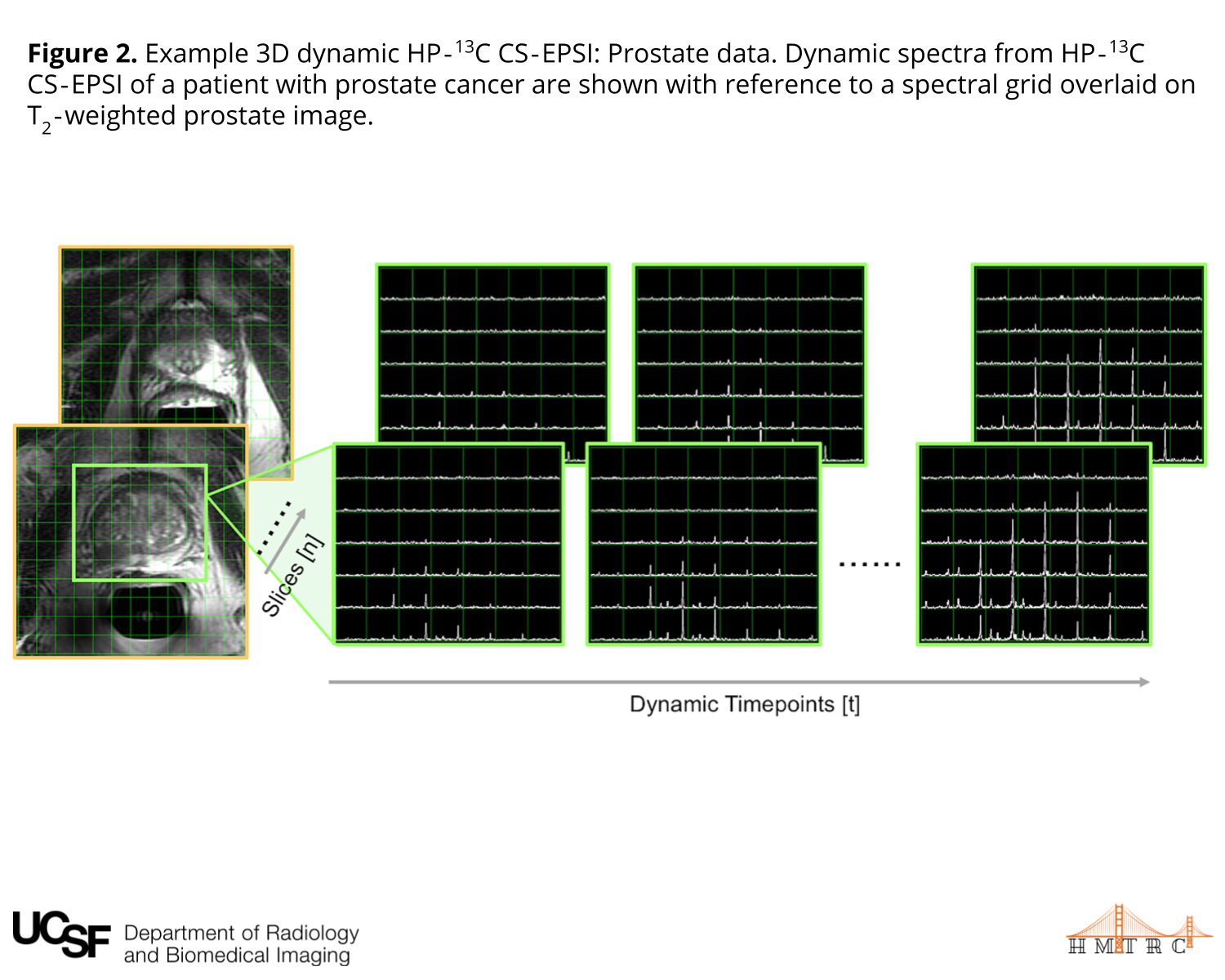
2.3 Imaging-based Methods:
The metabolite‐specific imaging approach used here is based on a sequence consisting of a single‐band SPSP RF pulse that independently excites each metabolite, followed by a rapid, single‐shot readout to encode the data within a single TR per metabolite/slice. HP 13C MR imaging offers an appealing alternative to EPSI because it can provide higher temporal resolution, is more robust to motion, and can be scaled to large, clinically relevant FOVs without an increase in scan time.
2.4 UCSF Brain Imaging Strategy:
HP imaging of patients with brain cancer at UCSF utilizes a frequency‐selective imaging approach with a single‐shot symmetric echo‐planar readout. This approach is well‐suited for the clinical imaging of [1‐13C]pyruvate, where a small number of well‐separated resonances are known a priori.
2.5 RF Excitation Strategies:
The choice of flip angles is crucial in a HP experiment due to the unrecoverable hyperpolarized magnetization, and depends on the temporal resolution and total imaging time. Both spectroscopic imaging and imaging‐based methods (eg, EPI) can benefit from flip angle schemes that vary between metabolites (“multiband” methods) and over time (“variable flip angles”). Multiband methods use a lower flip angle on the substrate compared with the metabolic products, thereby preserving substrate magnetization for future conversion to metabolic products. For the MRSI/CSI‐based methods, we achieve this by using multiband SPSP RF excitation pulses.
2.6 Acquisition Parameters Required for Reconstruction Analysis:
Reconstruction of MRSI and MRI data requires knowledge of the k‐space and time sampling, typically through characterization of the gradients.
2.7 HP Data Formats:
At UCSF, the strategy to address these issues has been to (1) standardize the parameterization of acquisitions and to encode this information in a consistent format called the data acquisition descriptor (DAD), and (2) to convert data encoded in vendor‐specific formats to a standard DICOM format to improve interoperability with different software packages and data flows.
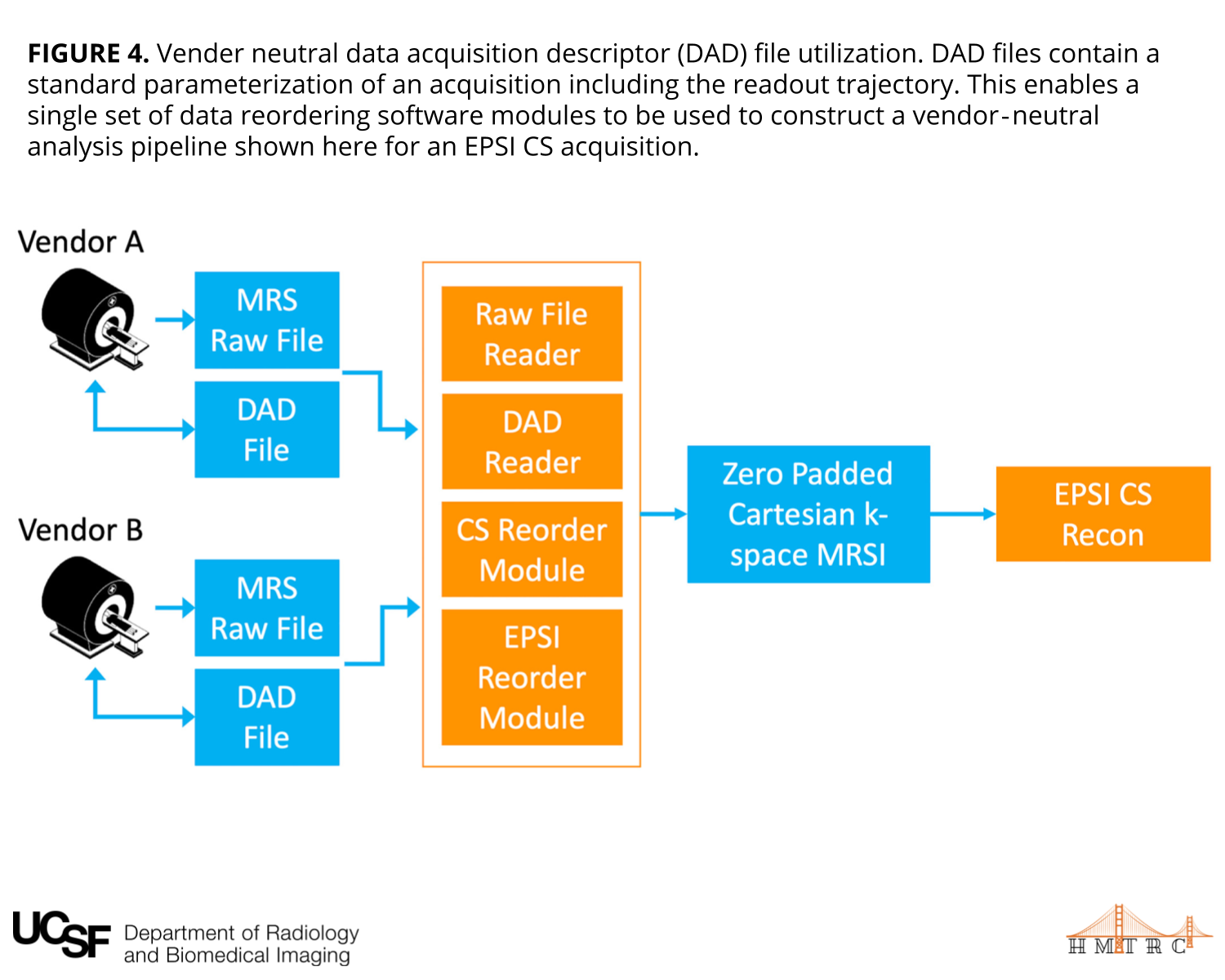
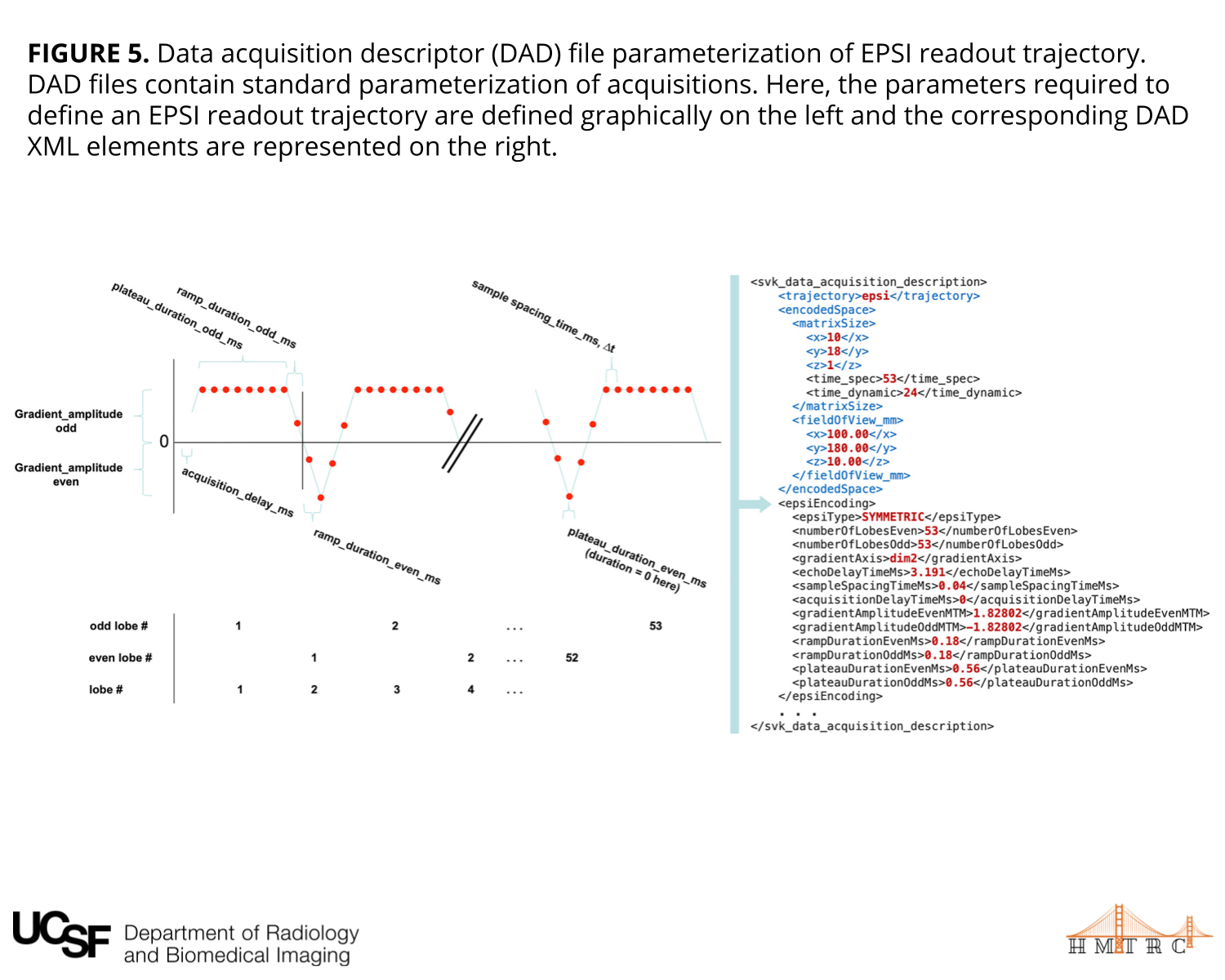
RECONSTRUCTION METHODS:
3.1 EPSI Reconstruction:
Our 3D CS‐EPSI sequence uses a pseudorandom undersampling encode pattern that travels in (kx,ky) to allow random sampling of data in (kx,ky,kf, dynamic) dimensions. In the case of multichannel data, a singular value decomposition (SVD) algorithm is applied to simultaneously benefit from parallel imaging and CS.
3.2 EPI Reconstruction:
Our metabolite‐specific imaging sequence uses a symmetric echo‐planar readout. A symmetric readout is used instead of a flyback readout because of its higher SNR efficiency, reduced echo‐spacing and shorter TE. For multichannel data, prewhitening is also applied to the raw data to account for noise correlation between elements.
3.3 Coil Combination:
Multichannel arrays are used in 13C studies to improve SNR, increase volumetric coverage and enable acceleration. Coil combination code is available in the “hyperpolarized‐mri‐toolbox” (see the supporting information). In the context of this communication, coil combination was performed in multichannel arrays for brain, whereas prostate imaging used a single‐element receiver.

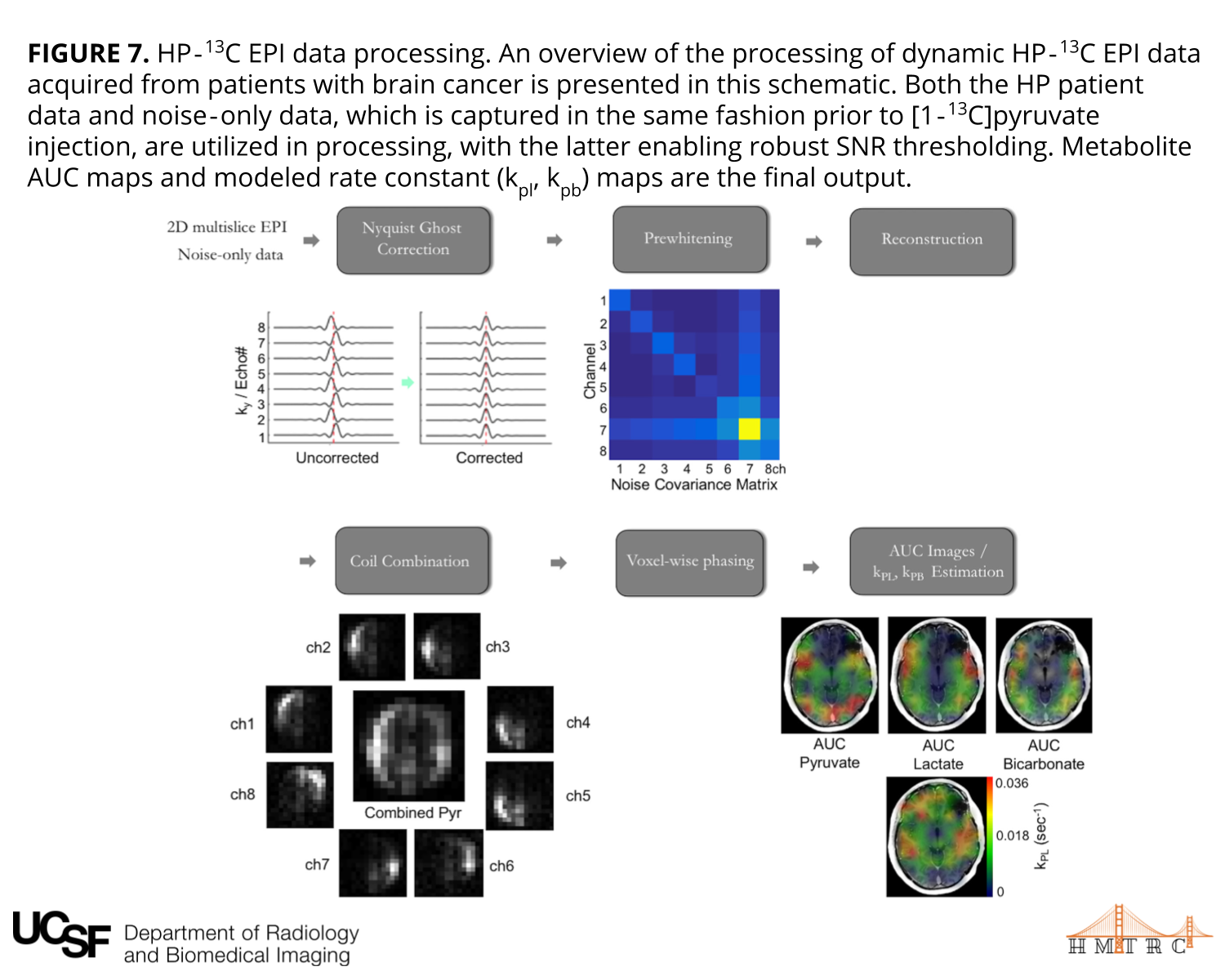
DATA POSTPROCESSING AND QUANTIFICATION:
4.1 SNR Thresholding:
Prior to performing quantifications, we perform thresholding based on the [1‐13C]pyruvate SNR.
4.2 Noise Considerations:
Whenever possible we avoid the use of magnitude data, as this can lead to bias at low SNR. In MRSI processing, we use phase‐sensitive peak detection and integration, resulting in real‐valued (ie, can be negative) peak data.
4.3 Metabolite Extraction:
Following data reconstruction, we perform several postprocessing steps prior to quantification. Please read the full publication for more details.
4.4 Quantification of Metabolic Conversion:
We primarily use area‐under‐(time)‐curve ratiometric methods as well as an input‐less kinetic modeling approach for human studies. The rationale for using these methods is that they have been shown to be robust to variations in polarization, SNR and pyruvate delivery, which can be considerable among human subjects.
VISUALIZATION AND CLINICAL INTEGRATION:
5.1 Visualization:
At UCSF, we developed a custom software package (SIVIC) to support these requirements. SIVIC reads MRI and MRSI DICOM images as well as multiple vendor‐specific raw data formats.
5.2 Integration with other molecular imaging modalities:
At UCSF, we have established methods for acquiring and analyzing 1H MRSI for patients with brain tumors. When integrating with HP 13C data, the 1H spectral data and maps can be affinely registered to the 13C data by applying the transformation matrix generated from the registration between the images acquired at two examinations, to enable voxel‐by‐voxel analysis. SIVIC can then be used to provide visual comparisons of 1H and 13C metabolic maps, as well as maps of standardized uptake values64 from PET.
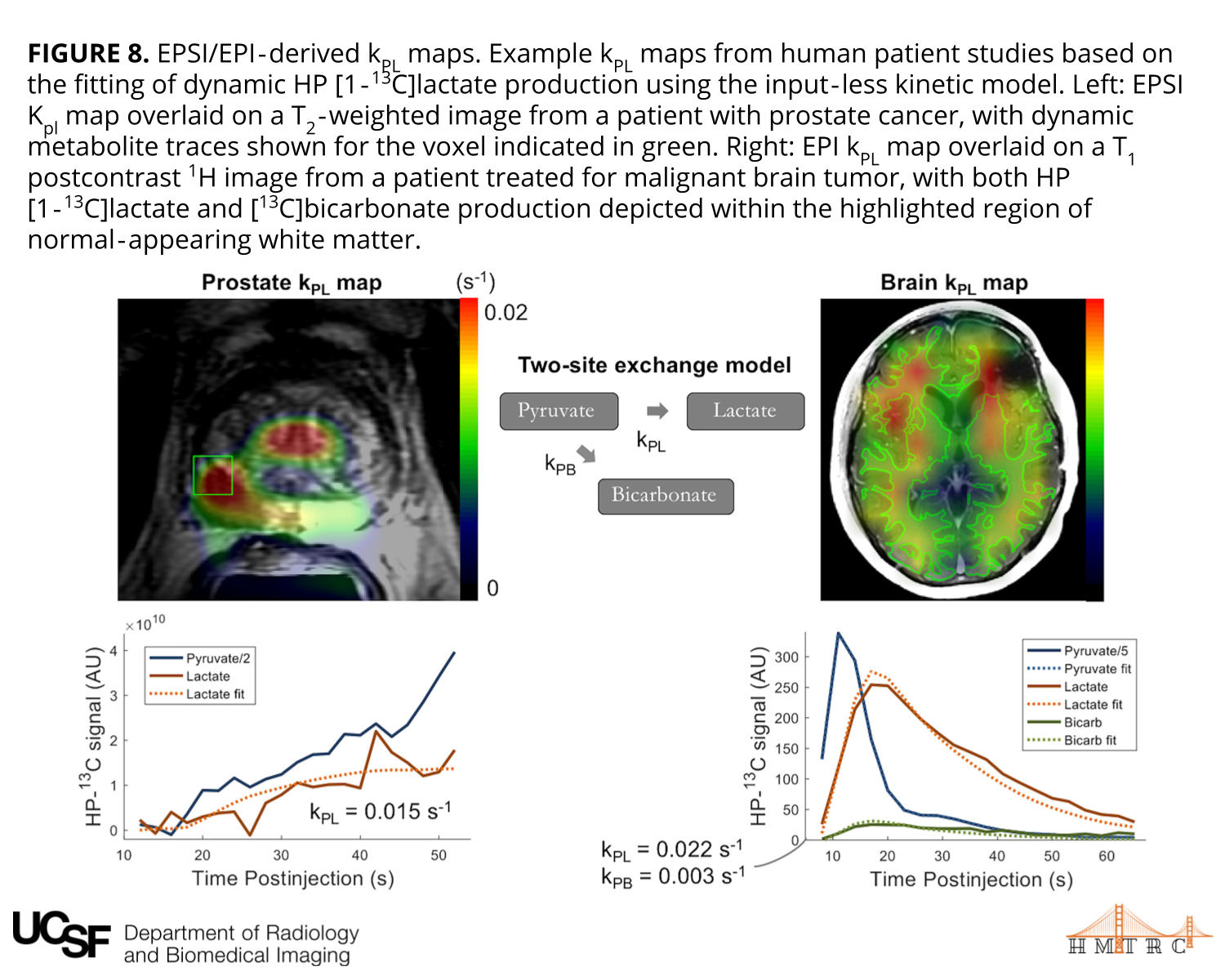
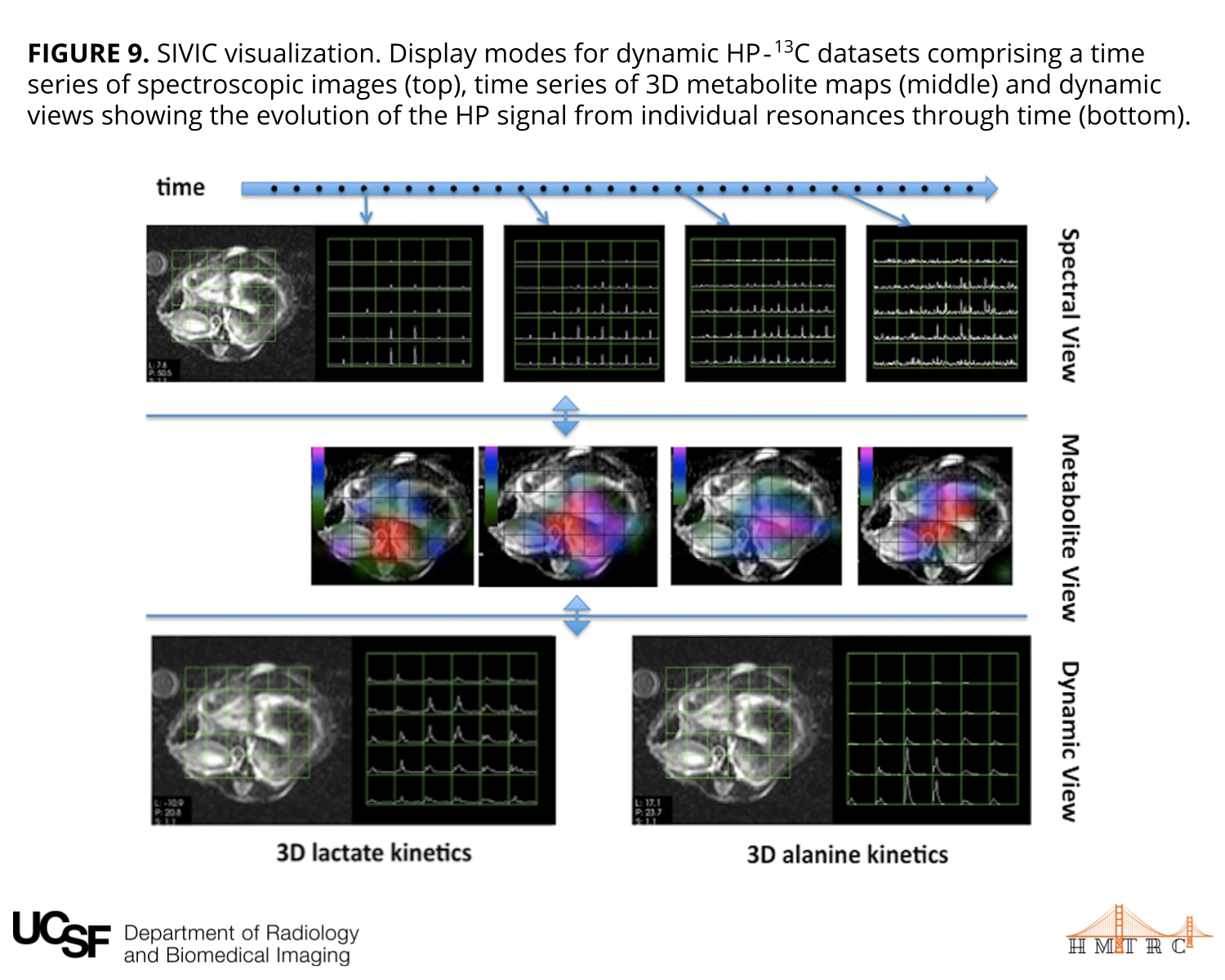
Data Samples & File Sharing
Human Research Raw & Processed Data Examples, Disease Model Images: Examples of in vivo human hyperpolarized MRI data can be found using the links to the right. These data sets were acquired with different methods and are described more in detail below.
- SIVIC Tutorials using Sample in vivo Hyperpolarized datasets: On our SOURCEFORGE page, you can find links to SIVIC tutorials that have been presented at live workshops. The data sets are from specific vendors, but the general concepts should applicable to data from any vendor.
- Sample in vivo Hyperpolarized MRI Data on GitHub: In the hyperpolarized-mri-toolbox on GitHub, you can access several in vivo hyperpolarized MRI data sets that come from animal and human studies that are acquired with a variety of different methods. Below is a selected example:
Human Brain: This dataset contains pyruvate, lactate, and bicarbonate dynamic imaging using metabolite-specific imaging with EPI in the head of a healthy volunteer.
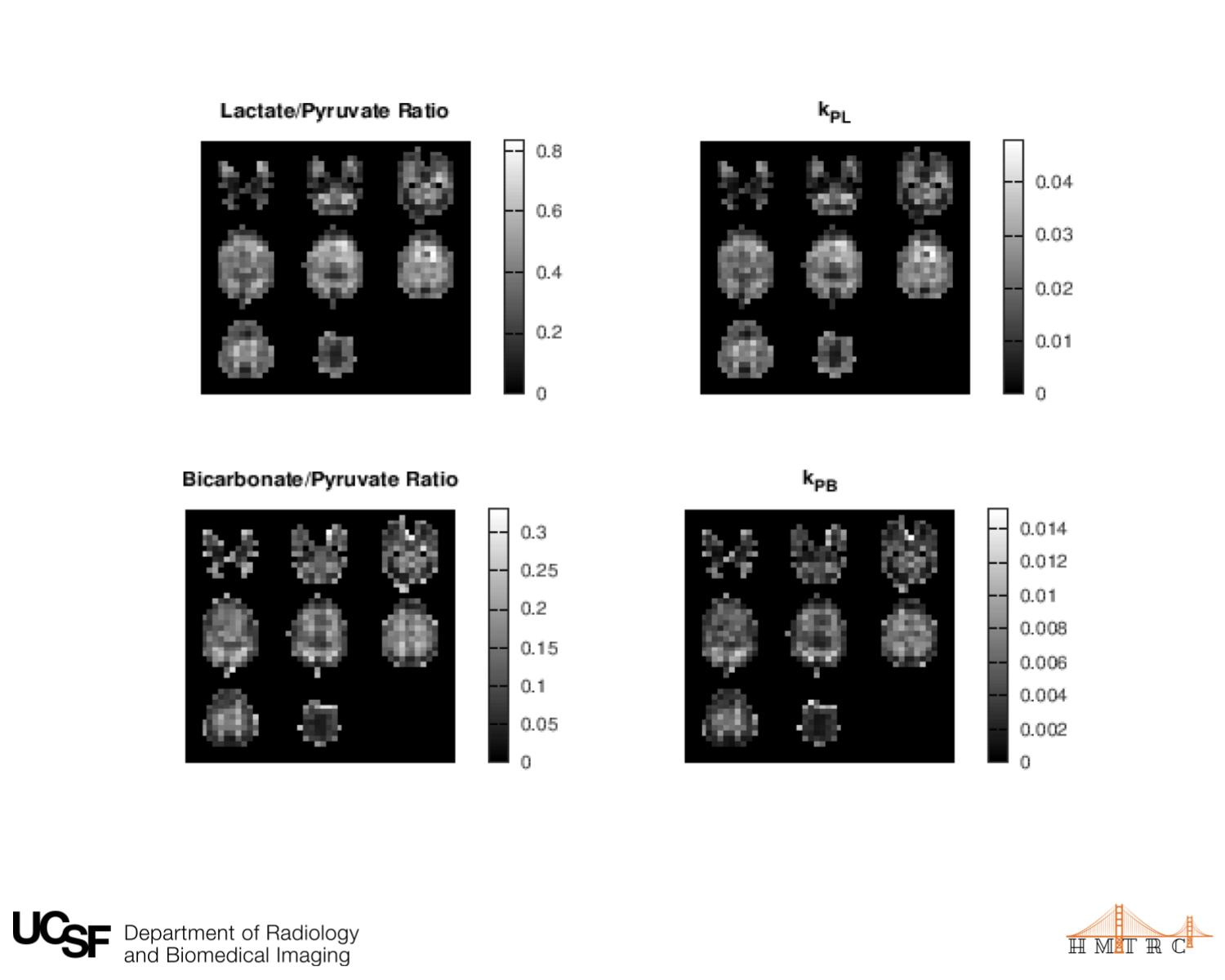
Resource: Data Samples & File Sharing
Link:
SIVIC Tutorial with Sample Data
Sample in Vivo HP Data on GitHub
Applicable Research Areas:
Preclinical & Human Research

